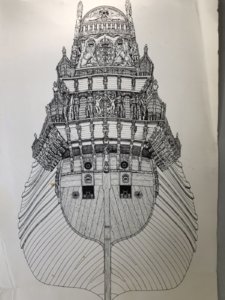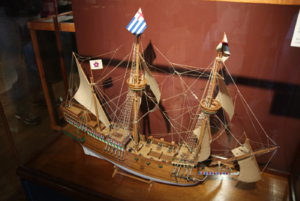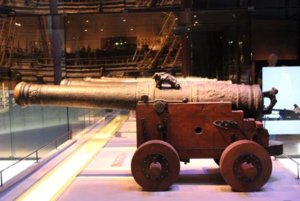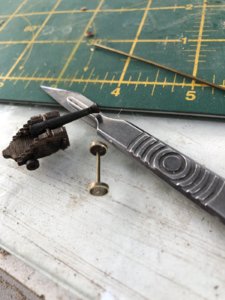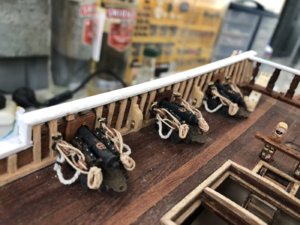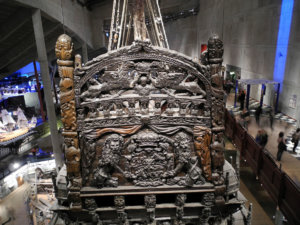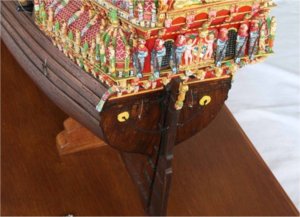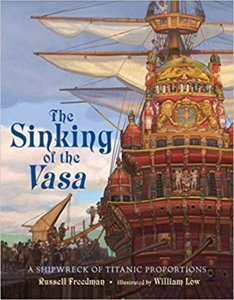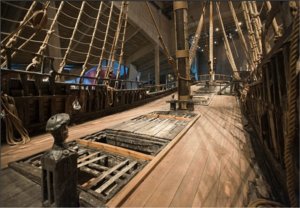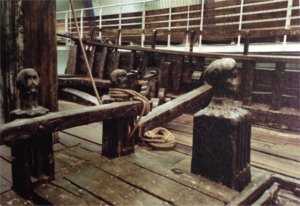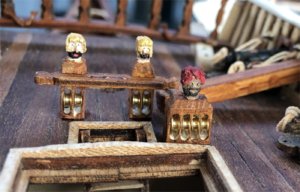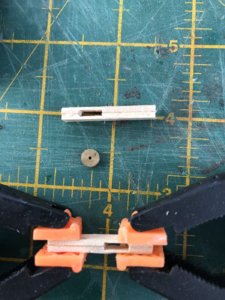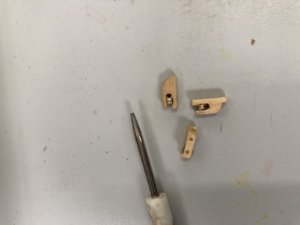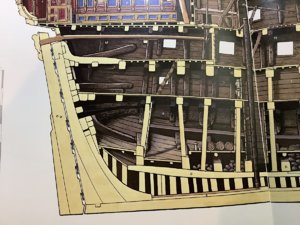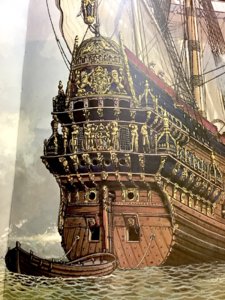I thought it might be time to attempt the chainplates along the flanks of the ship. It is interesting when reviewing pictures of the real Vasa, that two things stand out:
1. The positioning of the mix of chainplate positions for the deadeyes AND brace pulleys is located such as to allow a minimal, but clear view from the various gunports and cannons to fire clearly through the lines. The clearances are not large, but enough to allow a clear shot to pass through where no offset or angle of shooting is used (which would have been the norm). Additionally, in some instances, particularly where the chainplate is serving a mast with significant rake angle, the deadeye or brace line may be positioned directly in front of a gun, but the angle of the line up to the mast is such that it provides gun shot clearance.
2. The deadeyes themselves in most instances, especially for the larger, low chainplates, are NOT round. They are shaped like an eccentric 'egg' with the upper curvature significantly broader and of larger radius than the lower, curved bottom of the deadeye.
These two points are indicated in the photograph of the museum Vasa below. This picture is of the mainmast chainplate:
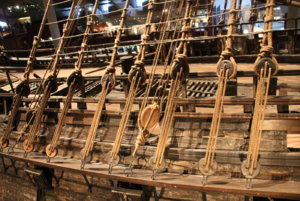
Even the aft, mizzenmast chainplates with their smaller deadeyes are not round, but shaped like an 'egg', see below. Note too that the braceline attached to this chainplate has its own strop attached to the top wale beneath. Strops too, made of iron on the real ship, may be angled considerably to account for their individual alignment of their deadeye and the mast rake angle.
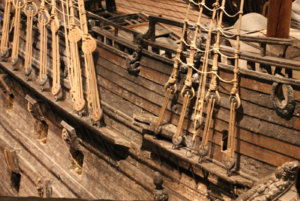
So, to simulate the above shapes, I have decided to sand every one of my deadeyes to this egg-like shape (wow, what was I thinking)!!! There are a LOT of them. However, job complete. Following the sanding was some mild wash staining with examples of a few completed below:
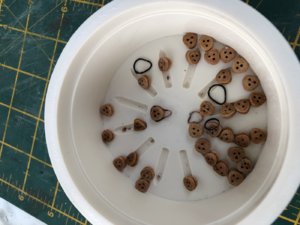
I experimented with the steel securing straps that surround the deadeyes and the most successful, assembly line approach I could devise, was to create a rounded piece of broomstick, which I cut down on one end, shaped and drilled a hole into for some medium weight copper wire. I then inserted one end of the wire into the hole and wound the wire once around the shape I had carved. Using my thumb to push the wire into the indented shape, I then cut the wire, removed it from the broomstick jig, and soldered the ends. These then formed the perfect shape and size for all my large deadeyes. The smaller deadeyes just required the same process (at the other end of my 6" broomstick), and I then had all the metal strap surrounds for the deadeyes with the extension shape beneath to attach to the brass strop.
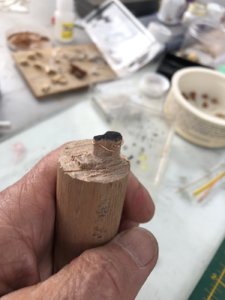
I used Brass Blackit to colour the copper wire and job done. The wire surrounds tightly fitted over the deadeyes and then with pliers I simply squeezed them a little, and the wires were secure and the correct shape. I broke a few solder joints with the pressure applied but these were easily repaired.
Adding the deadeyes to the brass strips supplied by the Billing kit, was a simple bend and cut after measuring, and then a scale railroad tie was used to secure the deadeye strop to the top wale of the hull. Each nail was pre-drilled to ensure it would go in accurately and straight. The brass strip coming up from the wale was bent around the chainplate, cut to length and angled within its groove cut in the chainplate timber. Positioning with the correct angle was important. To do this, I temporarily inserted the masts and ran a stringline from the top, lower section to the deadeyes to get the alignment and ensure correct clearance for any gunports.
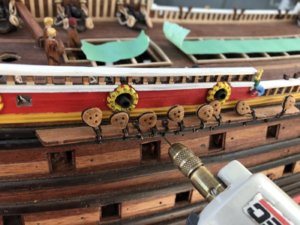
Note too - In the picture above, if you were wondering, I have placed green masking tape over the hatches - I am sick of dropping 'stuff' into inaccessible places and this stops that. when the hatch covers are placed on, the problem goes away, but they do catch a lot of dust!!
Once all deadeyes and brace lines were attached, a thin cover strip was glued over the strops to hold them in place and retain their angles. I tried really hard to give reasonable gunport clearance. For a couple of cases, I would not like to have been the gun aimer, especially in firing anything other than straight ahead!! I did have to change the number of deadeyes and brace lines from those recommended from the Billing kit Rigging Plan. I preferred the Museum Rigging Plan and will be adhering more strictly to this, than that of the kit.
Time Elapsed: 1235 hours
Regards,
Peter G.
